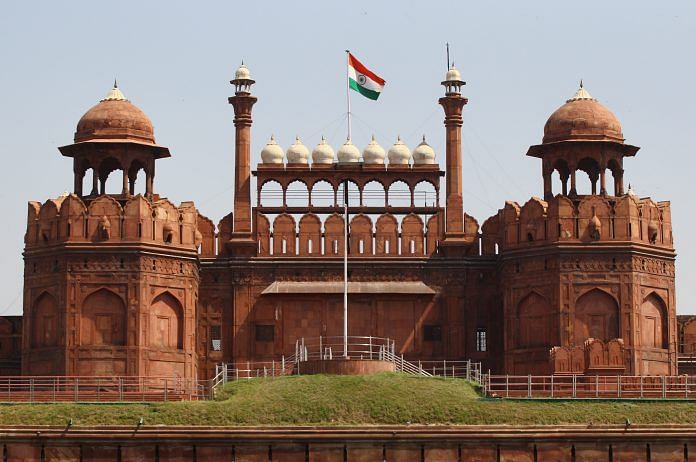The tie-up is part of the ‘Adopt a Heritage’ programme, which was introduced last year to seek the help of public or private entities to maintain historical/cultural heritage sites.
New Delhi: How often have you arrived at a site of archaeological significance to find odes to lost and present loves ruthlessly engraved into the walls? You may have also seen someone taking a leak on walls that stand testimony to centuries of a city’s history. Or just a state of general disrepair and negligence epitomised by crumbling, decrepit walls and fading art.
Social media users, historians and the political opposition have expressed outrage over the government’s tie-up with the business conglomerate Dalmia Bharat Group for the maintenance of Red Fort. They have accused the Centre of “selling” and “privatising” India’s heritage. But that’s not true.
The tie-up is part of the ‘Adopt a Heritage’ programme, which was introduced last year to seek the help of public or private entities, roped in as ‘Monument Mitras’, in the preservation and maintenance of India’s historical/cultural heritage as well as other tourist sites.
Under the contract terms, the property’s legal status remains the same. All the entity stands to gain is publicity, through signage and plaques.
ThePrint explains the scheme introduced to give a boost to the preservation of India’s heritage.
Just a temporary, adoptive parent
According to the MoUs, the corporation/body that adopts a monument is expected to maintain certain amenities at the heritage site, such as drinking water, Wi-Fi, surveillance system, and light and sound shows.
- The ‘Monument Mitra’ is expected to implement its plan for the project under the supervision of the tourism department.
- The MoU is valid for five years and subject to periodic performance reviews.
- The ‘Monument Mitra’ cannot generate revenue from the public in the form of convenience fee etc. Any such plan has to be sanctioned by the government, and the revenue thus made “required to be put back to sustain development, operations and maintenance activities at the adopted monument”.
- Only semi-commercial activities can be undertaken by the ‘Monument Mitra’, like a sound and light show, or the setting up of a cafeteria or a restaurant on the premises. Significantly, the costs will have to be fixed in consultation with a joint committee with members of the Archaeological Survey of India and the tourism ministry.
- The ‘Monument Mitra’ will have to open a separate account for the revenue generated from the semi-commercial activities etc. It will be audited every quarter by a chartered accountant empanelled by the Comptroller and Auditor General of India. Spending from the surplus amount in the account will be approved by a vision and oversight committee that has at least half a dozen bureaucrats.
- The contribution of ‘Monument Mitras’ will be acknowledged by way of signage and plaques that is “in tune with the aesthetic value of the site”.
- The MoU can be terminated at any point after a six-month notice.
Not the first ‘Monument Mitra’
The Dalmia Bharat Group, which has pledged Rs 25 crore over five years for the upkeep of the monument, is not the first to get on board.
On 31 January, Adventure Tour Operators Association of India (ATAOI) adopted the two natural sites – The Mt Stok Kangri trek route in Ladakh, and the Gangotri temple area and trail to Gaumukh in Uttarakhand.
- At Gangotri, the ATOAI has pledged to not just the cleanliness and upkeep of the temple and trail, it will also conduct an afforestation drive and establish a tourist rescue centre.
- A rescue centre will also be set up for the Mt Stok Kangri trek, for which the association will also install eco-friendly toilets, boards and dustbins.
The Dalmia Group has also adopted the 13th-century Gandikota Fort in Andhra Pradesh. The fort sits on top of a natural gorge, and is known as the ‘Hidden Grand Canyon of India’.
The list of specific tasks that the group has pledged to undertake for the upkeep of the site is quite simple in comparison to those promised for the Red Fort.
For instance, the group has pledged to clean the Gandikota Fort, illuminate it, and install CCTV cameras, Wi-Fi as well as seating areas, while at the Red Fort, it will create special facilities like a night trail, augmented-reality- and virtual-reality-based monument interpretation, and an app-based multilingual audio guide.
So far, letters of intent have been handed to 33 agencies for 98 monuments, including the SBI Foundation for Jantar Mantar, Delhi.






